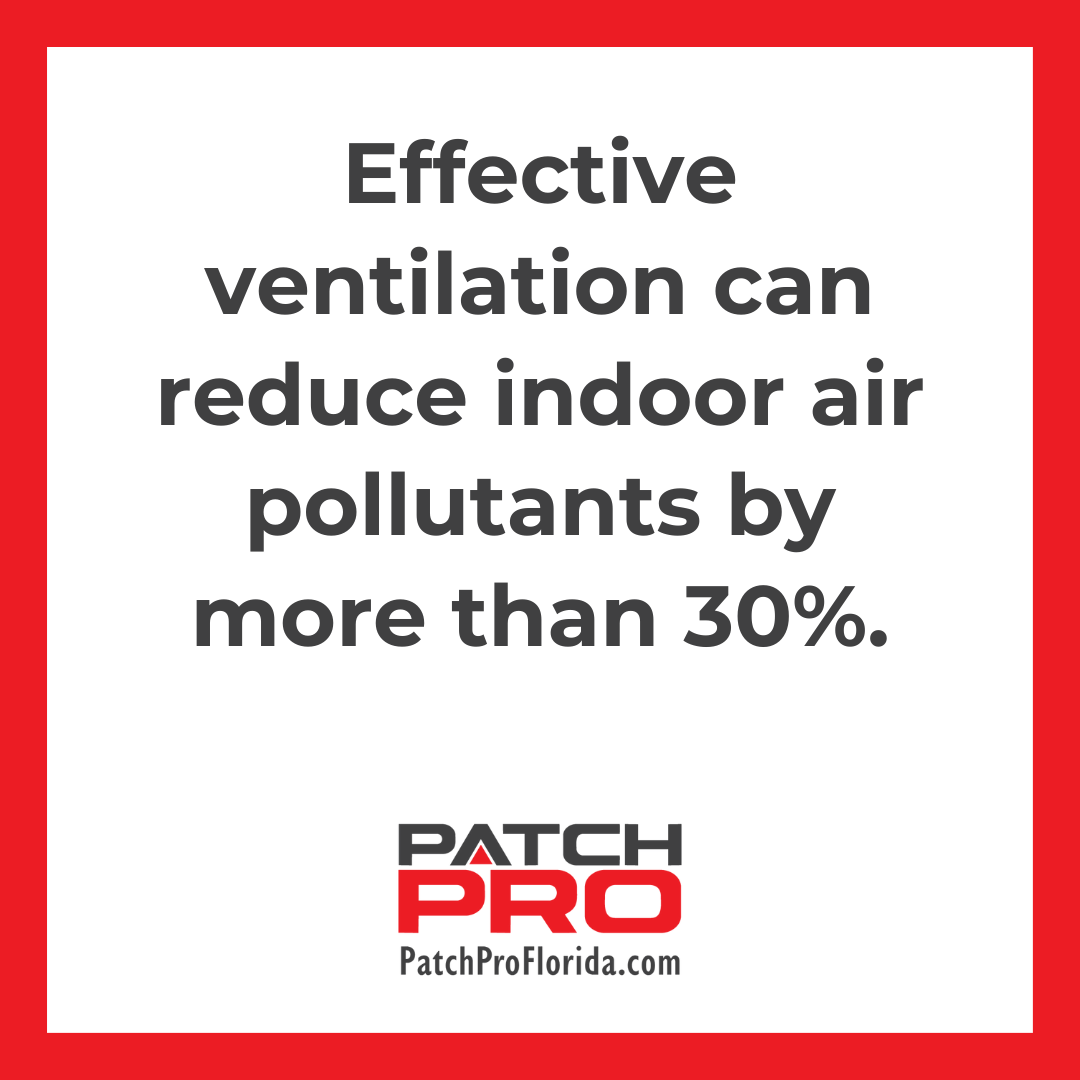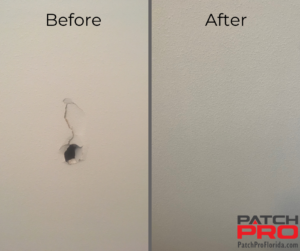Ventilation is critical for maintaining healthy indoor air quality, particularly in humid climates like Tampa, Florida. As humidity levels rise, ensuring a consistent fresh air flow becomes even more vital. Proper ventilation helps regulate temperature and reduces indoor pollutants accumulating in enclosed spaces. By implementing effective ventilation strategies, residents can create a cleaner and healthier living environment for their families.
With the right approach to ventilation, homeowners can significantly enhance their indoor air quality. Utilizing exhaust fans in critical areas, opening windows on pleasant days, and considering energy-efficient ventilation systems are just a few practical ways to achieve this. In this discussion, we will explore various strategies for improving indoor air quality, emphasizing ventilation’s essential role in cultivating a fresh atmosphere at home.
Ventilation – Essential for Fresh Air
 Proper ventilation is vital for maintaining good indoor air quality. It allows fresh air to circulate, reducing indoor pollutants. In Tampa, where humidity levels are high, utilizing exhaust fans in bathrooms and kitchens is crucial. These fans help remove excess moisture and prevent mold growth, which can negatively affect air quality.
Proper ventilation is vital for maintaining good indoor air quality. It allows fresh air to circulate, reducing indoor pollutants. In Tampa, where humidity levels are high, utilizing exhaust fans in bathrooms and kitchens is crucial. These fans help remove excess moisture and prevent mold growth, which can negatively affect air quality.
Moreover, consider opening windows when the outdoor air is comfortable. This simple act can significantly improve air circulation and replace stale air. Incorporating cross-ventilation by opening multiple windows can further enhance airflow, promoting a fresher environment. According to the EPA, effective ventilation can reduce indoor air pollutants by more than 30%.
However, be mindful of outdoor pollution sources, especially in urban areas. Monitoring weather conditions and air quality indexes (AQI) can help. Utilize the local air quality report regularly to determine when it is best to ventilate your home. Additionally, upgrading to energy-efficient ventilation systems can enhance indoor air quality while reducing energy costs, proving beneficial for your health and wallet.
Indoor Humidity Control
High humidity in homes can foster the growth of mold and dust mites, both of which damage indoor air quality. In Tampa, humidity levels often exceed comfort levels, making humidity control a priority.
Dehumidifiers can help maintain optimal indoor humidity levels, ideally between 30% and 50%. The American College of Allergy, Asthma, and Immunology reports that keeping humidity in this range reduces the growth of mold.
In addition, ensure that your home is well insulated. Proper insulation can prevent excess moisture from entering your living spaces. Regularly check for leaks around windows and doors. This simple step can help maintain a comfortable and healthy environment.
Regular HVAC Maintenance
Your HVAC system plays a vital role in your home’s quality. Regular maintenance improves efficiency and extends the system’s life. Clogged filters can hinder airflow and circulate dust and pollutants throughout your home, leading to an unhealthy atmosphere.
Transitioning to a proactive maintenance schedule can significantly improve indoor air quality. Changing the air filter every 1-3 months is recommended, especially during peak usage seasons. A clean filter traps dust, allergens, and other contaminants, ensuring they do not get released back into your living space.
Additionally, consider scheduling annual professional inspections for your HVAC system. These inspections can identify potential issues before they become major problems, saving you time and money. The U.S. Department of Energy states regular maintenance can improve system efficiency by 5% to 15%. Moreover, clean and well-maintained systems operate more quietly and reduce the likelihood of unexpected breakdowns. Investing in your HVAC system leads to cleaner indoor air and reduces energy costs while contributing to a more comfortable home environment.
Focus on Dust and Allergen Removal
Dust and allergens can accumulate quickly in homes, affecting indoor air quality. Regular cleaning routines can significantly reduce these irritants and improve overall air quality in your Tampa home.
Transitioning to green cleaning solutions can also help. Many commercial cleaning products contain volatile organic compounds (VOCs) that release harmful chemicals into the air. Opt for natural cleaning alternatives, such as vinegar and baking soda, effectively cleaning without emitting harmful substances.
Furthermore, consider regular vacuuming with a high-efficiency particulate air (HEPA) filter vacuum. This type of vacuum can trap small particles and allergens, providing a deeper clean. According to the Asthma and Allergy Foundation of America, a well-maintained indoor environment can lower residents’ asthma and allergy symptoms.
Addressing Drywall Damage
Surprisingly, drywall can impact indoor air quality. When drywall deteriorates or gets damaged, it can harbor mold and increase dust particles in the air. Mold can lead to health problems, including respiratory issues, fatigue, and allergic reactions. The presence of these contaminants can trigger asthma attacks or worsen existing allergies, particularly for vulnerable populations like children and the elderly.
Therefore, repairing any drywall damage promptly is essential for maintaining good indoor air quality. If you notice any cracks, holes, or signs of moisture on your walls, it is crucial to address these issues immediately. Failing to do so can exacerbate health problems and lead to costly renovations down the line.
Experts recommend using moisture-resistant drywall, especially in high-humidity areas like kitchens and bathrooms. This type of drywall minimizes the chance of mold growth, improving indoor air quality. Regular inspections and maintenance can also help catch minor issues before they escalate, ensuring a healthier living environment for you and your family. Regular upkeep fosters peace of mind, protecting your home from harmful air pollutants.
Use of Air Purifiers
Incorporating air purifiers into your home can dramatically improve indoor air quality. These devices are designed to capture airborne particles, including dust, allergens, and pet dander. They create a cleaner atmosphere, particularly for those with asthma or allergies.
Transitioning to high-efficiency filters in your purifiers can further enhance their effectiveness. Look for models with a HEPA filter, as they can trap 99.97% of particles that are 0.3 microns or larger. According to the Environmental Protection Agency (EPA), air purifiers can significantly reduce allergens and indoor pollutants.
Be sure to check the recommended room sizes for each purifier model. Using the right size for your space maximizes effectiveness and improves overall air quality.
Add More Houseplants
Houseplants can play a vital role in improving indoor air quality. They naturally filter air toxins and produce oxygen, creating a healthier living space. Some of the best plants for air purification include spider plants, peace lilies, and snake plants.
Transitioning to a home with various houseplants can provide beauty and health benefits. The NASA Clean Air Study found that certain houseplants can remove up to 87% of indoor pollutants within 24 hours.
However, ensure you choose plants suitable for your home environment and take care of them properly. Regularly removing dead leaves and ensuring they receive appropriate sunlight will help them thrive.
Minimize VOCs with Smart Choices
Volatile organic compounds (VOCs) are harmful chemicals found in many household products, including paints, cleaning agents, and furnishings. Reducing exposure to VOCs is crucial for improving indoor air quality.
To minimize VOCs, look for products labeled “low-VOC” or “no-VOC.” Additionally, introducing more natural and eco-friendly alternatives, such as plant-based cleaners and non-toxic paints, can help create a healthier indoor environment. By selecting these options, you contribute to better air quality and promote sustainability.
When painting or redecorating, aim to do so during cooler months and ensure adequate ventilation in your home. Keeping windows open can help disperse VOCs while the paint or adhesive cures. Furthermore, using air purifiers with activated carbon filters can help capture any remaining VOCs in the air. The EPA notes that reducing VOC levels contributes to healthier indoor air quality, ultimately enhancing comfort and well-being for all residents.
Enhancing Indoor Air Quality for a Healthier Home
Fostering good indoor air quality is essential for the health and comfort of your family, especially in humid climates like Tampa. Homeowners can create a fresher and healthier home environment by understanding and implementing effective ventilation strategies. Whether using exhaust fans, opening windows for cross-ventilation, or investing in energy-efficient systems, prioritizing airflow significantly minimizes indoor pollutants and maintains optimal humidity levels.
Additionally, combining ventilation with practices such as regular HVAC maintenance, dust management, and the incorporation of air purifiers or houseplants will further enhance air quality. By taking proactive steps, you protect your family from potential health issues and create a more pleasant living space that can be enjoyed year-round. Embrace these measures to ensure your home remains a sanctuary of fresh air.



You must be logged in to post a comment.